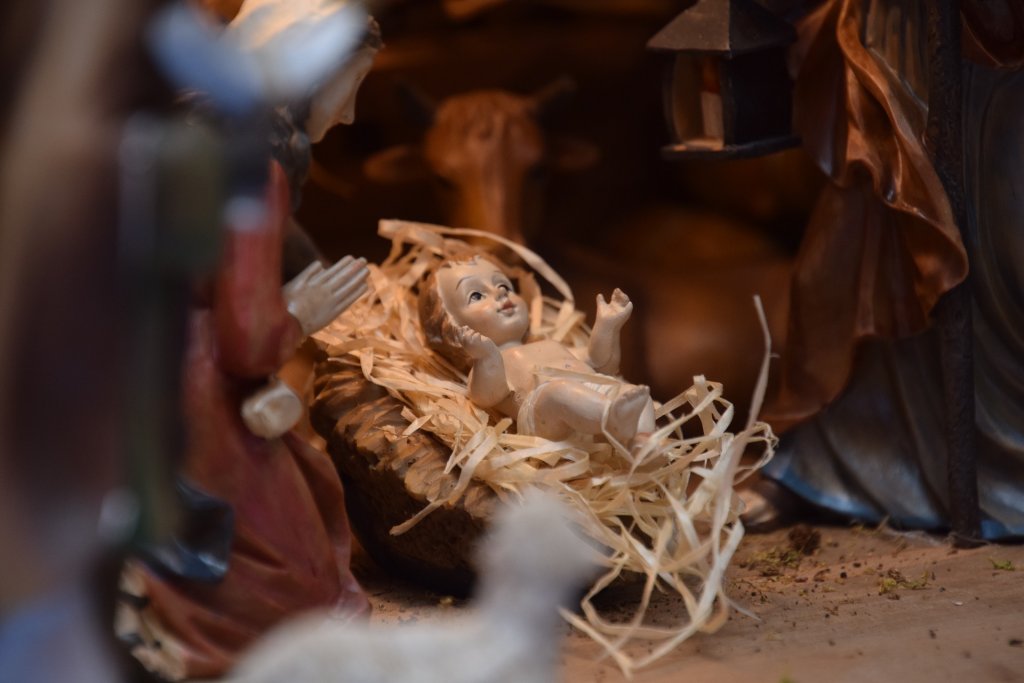Our attachment to the Christmas story may be the greatest act of self-deception in Western history, and that might not be a bad thing.

In I Told Me So American philosopher Gregg Elshof explores the ubiquitous nature of self-deception in public and private life, in both secular and religious communities. I squirmed from the opening lines: “A mother somehow manages not to notice the obvious signs that her son is on drugs. A wife does the same with respect to her husband’s affair. All of the evidence is easily available. Yet it goes unseen.”
Research on the topic reveals some disturbing material. A survey of a million high school seniors in the US found that 70 percent of them thought they were “above average in leadership ability”. Only 2 percent thought they were “below average”. And it’s not just the young. The same research found that 94 percent of college professors think they are doing a “better-than-average job”. It seems we have an amazing ability to grossly overestimate our abilities and possibilities. Sometimes we don’t let the evidence get in the way of our own story.
But that’s not the end of it. Elshof explores the equally spectacular good that often comes from self-deception. The same human trait that allows a politician to convince himself his “lofty ends” justify his morally ambiguous means, can also allow a powerless black female activist, like Rosa Parks, to believe against all the available evidence that civil rights would come to Alabama. She lived to see the dream come true.
Self-deception has an unparalleled upside. It allows us to dare to imagine the impossible, or at least the highly implausible, and frequently to watch it unfold. Think of Nelson Mandela in his Robben Island prison. What enabled him to believe-through 27 long years-not only that he would one day be free but that the nation that left him to rot would be transformed through non-violence, reconciliation and love and then make him President? Certainly not the ‘evidence’! Noble self-deception is what kept that flame burning, a kind of prophetic madness that only looks like genius in retrospect.
Victor Frankl in his psychological reflections on Auschwitz famously observed that “hope against hope”, to use a biblical expression, was what made survival in the death camps possible for many. He compares it to “the delusion of reprieve” observed in some death-row prisoners who, right up to the end, are able to believe they will be found innocent. In Auschwitz, Frankl insisted, this happy self-deception saved the lives of thousands.

Less dramatically, of course, these hopeful delusions allow ordinary human beings to entertain utterly unrealistic expectations: to explore space, sail solo around the world, conquer Everest, win Olympic gold, and so on. Self-deception can be harmful, but it can also lift us to great heights and bring about unexpected realities. Sometimes the delusions are truer than all the available evidence.
The question is whether the West’s attraction to Christmas is a self-deception of this beautiful kind.
At this time of year news services search the weird and wonderful world of biblical scholarship to find some ‘new’ theory about Jesus, the New Testament or the Christmas story. Professor So-and-So from the University of Somewhere will offer the opinion that Jesus never lived or that the Christmas story rehashes the myths of Egyptian sun gods or that the Bible writers created their tale ex nihilo for questionable political aims. In other words, the Nativity is pure bunkum and anyone who still believes it is engaging in self-deception.
It is true there are some highly unlikely elements in the story: guiding stars, gift-bearing wise men, angelic hosts, not to mention the promise of “peace on earth”. Historians and philosophers endlessly debate these things. As a Bible scholar, let me, for the purposes of this argument, call the contest a draw.
What I am especially interested in here are the equally counterintuitive bits placed alongside the miraculous parts of the story. Miracles often serve to enhance the greatness of a figure, deliberately hiding anything ordinary about the hero. But the difficult-to-believe bits of the Jesus story are laid in deliberate juxtaposition with the shocking ordinariness, even ignominy, of this Messiah’s birth.
However unbelievable it is to believe in guiding stars and angelic visitations, it is just as bizarre to accept the central themes of the Christmas narrative. The long-awaited King is born in almost total obscurity. The God of the universe is wrapped in swaddling cloths. The one who would become history’s most recognizable and revered name – whose followers knew in their bones this would be so – began life where the goats fed and relieved themselves. With almost perverse delight the Gospel of Luke has angels announcing the arrival of “Christ the Lord” to shepherds instead of princes, declaring that his ‘sign’ was not a throne or palace but a manger: “A Saviour is born. And this will be the sign to you: you will find a baby wrapped in cloths and lying in a manger” (Luke 2).
They found the ability to hope against hope … and their impossible dream came true.
Inevitably, some continue to claim that our love of the Christmas story is self-deception at its worst, akin to believing in “fairies in the garden” and in “flying spaghetti monsters” and all that. But I think of Christmas as the ultimate expression of self-deception in the other sense. This near-impossible-to-believe story triggers “hope against hope”, and moves us to the highest thoughts and possibilities. It invites us to imagine that pure Majesty can be known in great humility. It allows us to dream that despite our infinitesimal place in the universe and profound moral failures, humanity is loved by the Infinite.
One powerful example of this happy self-deception is captured in one of the traditional readings that will be heard in churches throughout the world this Christmas. Isaiah 9 contains a prophecy, written centuries before Christ, about a “great light” that would shine out of “Galilee of the gentiles”, the boondocks of ancient Israel. The light is a person, a “Prince of Peace” whose rule would be international and eternal.
What could possibly have sustained confidence in such a prophecy in the centuries leading up to the Gospels’ claim that this ancient promise was coming true in their Galilean teacher? Only glorious self-deception could nourish such an ill-founded hope. More striking, what could have inspired Christian hope in those first painful centuries? Nothing in their experiences of imperial pressure and persecution could have encouraged them to believe that the Galilean would conquer Rome and then capture the hearts of men and women from every nation in the world. They found the ability to hope against hope – to deceive themselves, we could say – and their impossible dream came true. A flame that first flickered in Galilee has indeed become an international light, and there is no sign of it going out. If believing in Christmas is an act of self-deception, it is one full of promise, beauty and reality.
Dr John Dickson is an author and historian, and a founding director of the Centre for Public Christianity.
This article originally appeared at Online Opinion.


